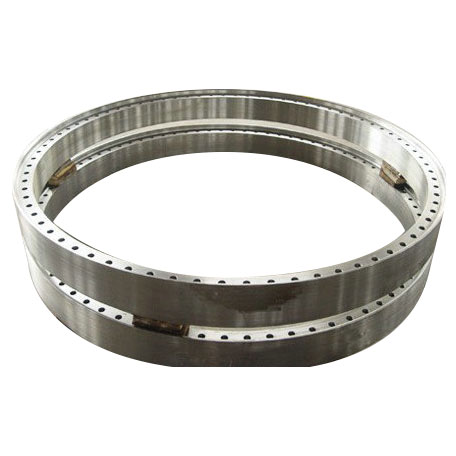Choosing the Right Anchor: Factors Influencing Large Diameter Wind Power Flange Selection for Offshore vs. Onshore Wind Turbine Installations
2024-03-21
In the realm of renewable energy, wind power continues to gain momentum as a clean and sustainable source of electricity generation. As wind energy projects expand to offshore locations, the selection of large diameter wind power flanges becomes increasingly critical. These flanges serve as the foundation for towering offshore wind turbines, facing unique challenges compared to their onshore counterparts. Let's delve into the factors that influence the selection of large diameter wind power flanges for offshore wind turbine installations compared to onshore installations.
1. Corrosion Resistance:
Offshore environments pose significant challenges due to exposure to corrosive saltwater, high humidity, and harsh marine conditions. Large diameter wind power flanges for offshore installations require enhanced corrosion resistance compared to those used onshore. Specialized coatings, corrosion-resistant alloys, and protective treatments are applied to offshore flanges to mitigate corrosion and ensure long-term durability in marine environments.
2. Seismic Considerations:
While seismic events are less common in offshore locations compared to onshore sites, they remain a consideration for large diameter wind power flange selection, particularly in regions prone to seismic activity. Offshore flanges may need to be designed and engineered to withstand seismic forces and ensure structural integrity in the event of earthquakes or underwater disturbances.
3. Foundation Design:
Offshore wind turbine foundations differ from their onshore counterparts, with offshore installations typically utilizing monopile, jacket, or floating platforms. The selection of large diameter wind power flanges for offshore installations depends on the specific foundation design and installation method employed. Flanges must be compatible with the chosen foundation type and capable of withstanding the dynamic loading conditions associated with offshore installations.
4. Wave and Wind Loads:
Offshore wind turbines are exposed to higher wind speeds, larger wave heights, and more extreme weather conditions compared to onshore installations. Large diameter wind power flanges for offshore installations must be designed to withstand the increased wind and wave loads encountered offshore, ensuring structural stability and reliability in challenging marine environments.
5. Installation and Maintenance Logistics:
Offshore wind turbine installations present logistical challenges compared to onshore projects, including transportation, installation, and maintenance in remote and offshore locations. The selection of large diameter wind power flanges for offshore installations considers factors such as ease of handling, transportation, and installation methods to minimize costs and streamline offshore operations.
6. Environmental Impact:
Offshore wind energy projects require careful consideration of environmental impact and ecological sensitivity. Large diameter wind power flanges for offshore installations must adhere to strict environmental regulations and mitigation measures to minimize disturbance to marine ecosystems, protect biodiversity, and ensure sustainable offshore development.
7. Cost Considerations:
Offshore wind energy projects typically entail higher upfront costs compared to onshore projects due to the complexities of offshore installations and the need for specialized equipment and infrastructure. Large diameter wind power flanges for offshore installations may involve additional costs associated with corrosion protection, foundation design, installation logistics, and maintenance requirements. However, the long-term benefits of offshore wind energy, including higher wind speeds, greater energy yield, and reduced land constraints, may justify the investment in offshore installations.
In conclusion, the selection of large diameter wind power flanges for offshore wind turbine installations involves careful consideration of factors such as corrosion resistance, seismic considerations, foundation design, wave and wind loads, installation logistics, environmental impact, and cost considerations. By addressing these factors and implementing appropriate mitigation measures, developers and stakeholders can ensure the successful deployment of offshore wind energy projects, harnessing the vast potential of wind resources in offshore environments for clean and sustainable electricity generation.



